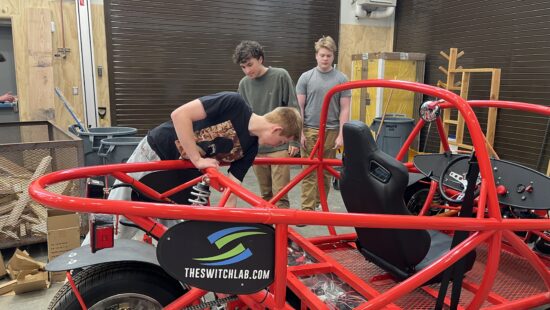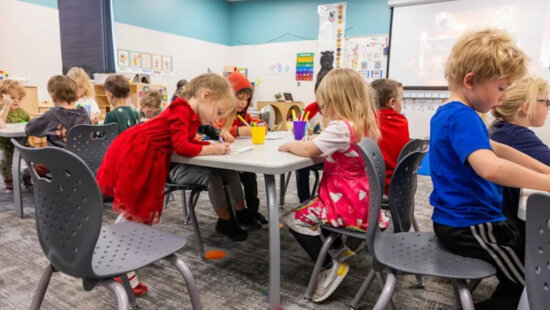Education
Park City High School students build street-legal electric car in PC CAPS lab
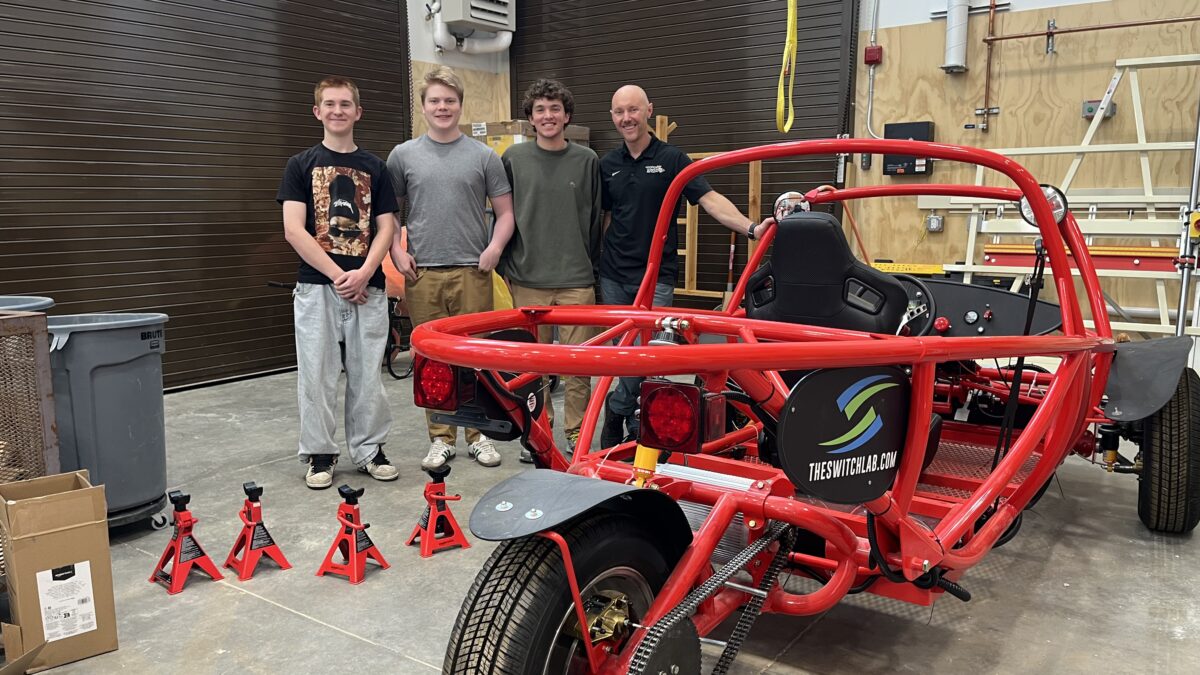
Park City High School engineering students Brian Johnson, Jackson Carlson and Sean Kopish stand with teacher Brad Gannon beside the three-seat Switch Lab electric car they built this year in the PC CAPS lab. Photo: Rebecca Brenner
PARK CITY, Utah — Three Park City High School juniors are down to their final fuses and software tweaks on an electric kit car they have assembled from the ground up in the school’s engineering strand of the Park City Center for Advanced Professional Studies (PC CAPS).
“We received the vehicle in August thanks to a grant from the Park City Education Foundation and Perkins V career-tech dollars,” teacher Brad Gannon said, standing beside the bare-metal frame. “It’s a 1,400-pound kit we can tear down and rebuild each semester, so every group gets the full experience.”
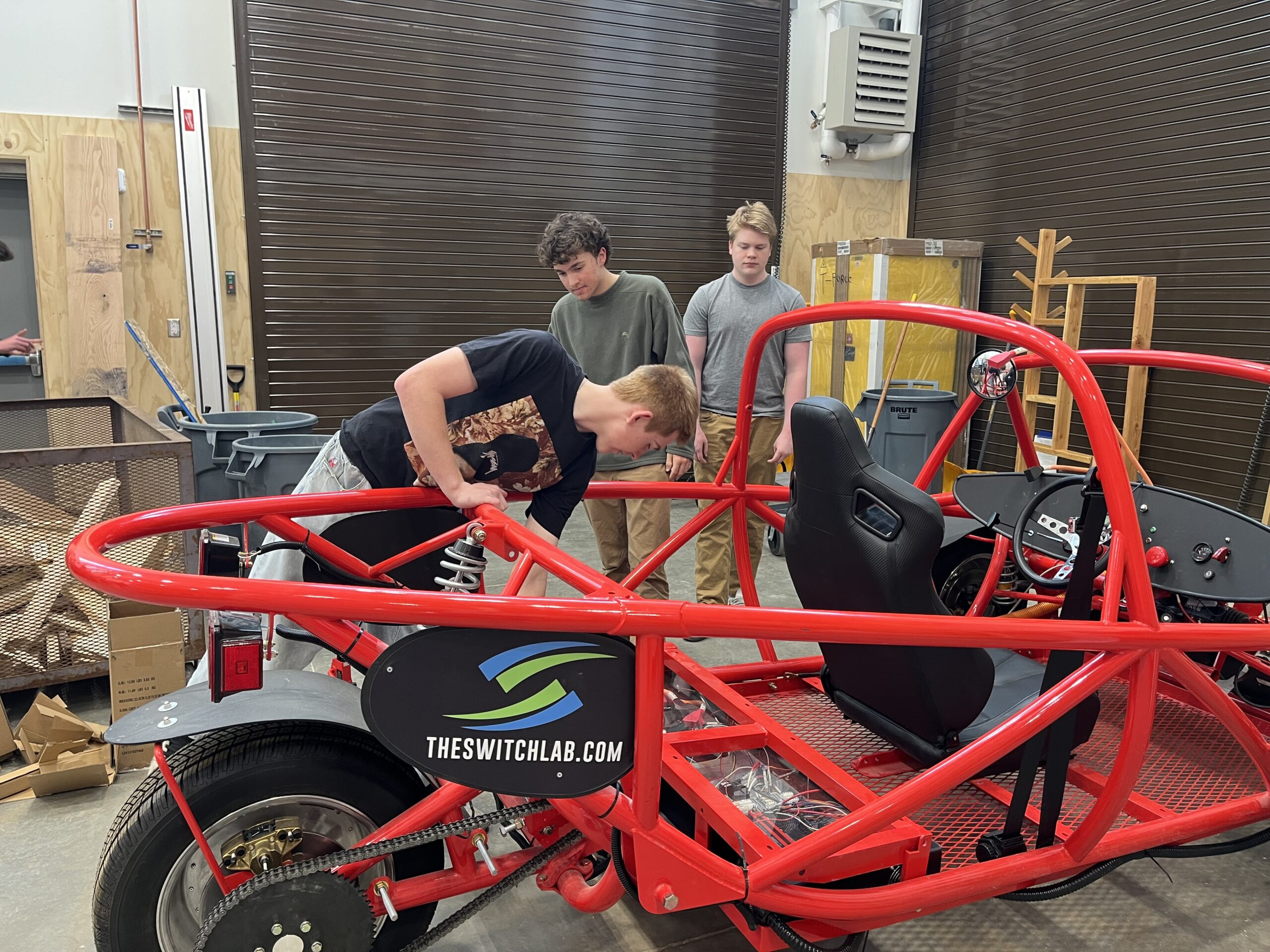
The Switch Lab kit, built by Switch Vehicles of Sebastopol, California, runs on a 96-volt lithium-ion pack. Gannon’s students spent the fall linking more than 100 wires, then waited weeks for back-ordered parts that did not arrive until February.
“The electrical side and how the whole car works have been fascinating,” junior Jackson Carlson said. “It’s a broad curriculum that applies to almost every EV on the market. The toughest part was those back-ordered parts—you’d reach a step and discover a missing wire or fuse still in transit.”
Classmate, Sean Kopish, said the project showed him “all the cells, the battery management to keep them balanced, and the motor controller. Figuring it all out was challenging, but interesting.”
“I didn’t know much about batteries before this,” junior Brian Johnson added. “Learning the electrical aspects has been awesome. The parts delays set us back, but overall it’s been fun.”
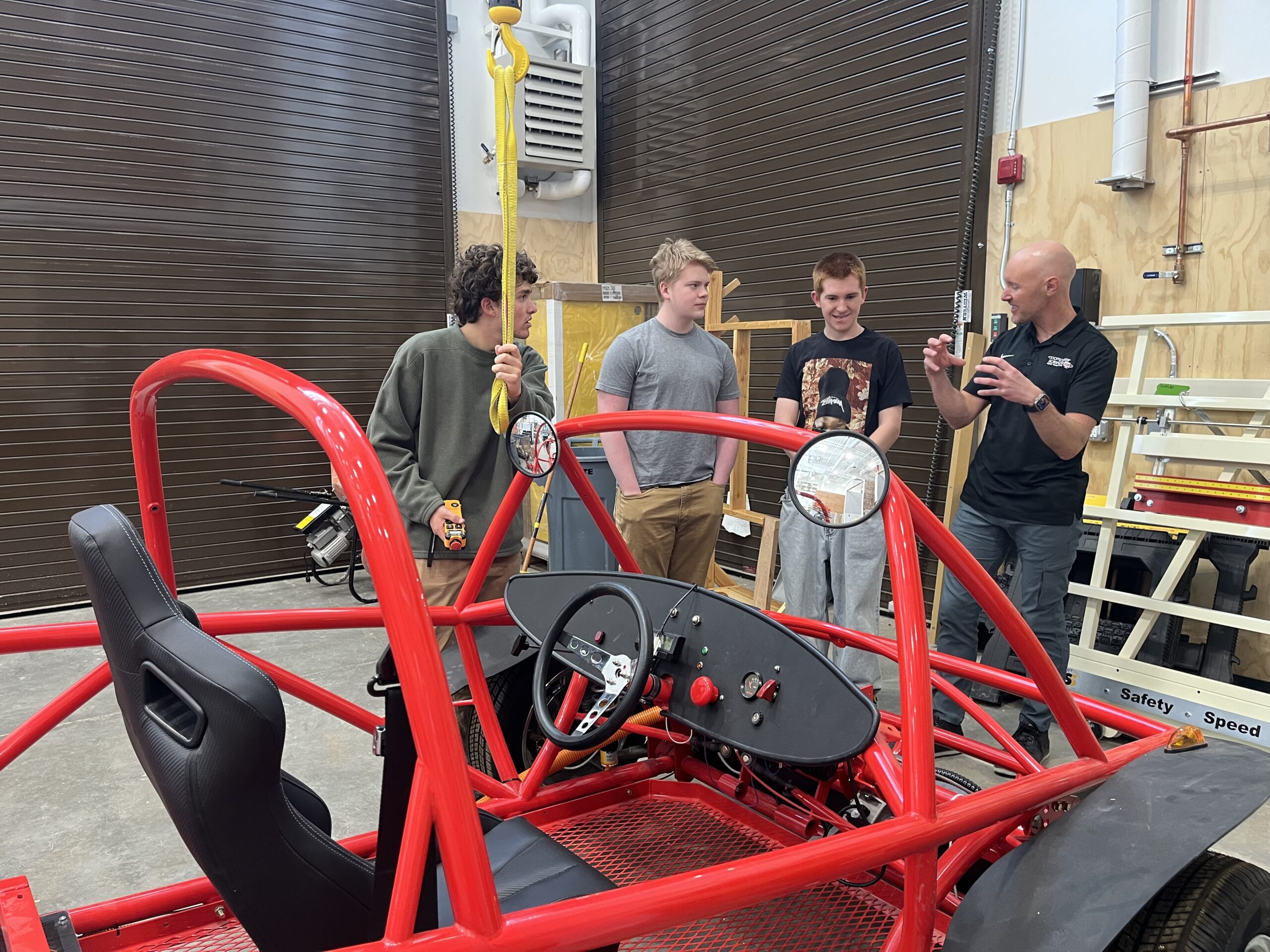
Gannon said the team hopes to balance the batteries and connect a laptop for final programming next week. “Once we hook the batteries up and go through the high-voltage process, we’ll see how well they did,” he said. The software will set torque, regenerative braking and a speed governor; unrestricted, the car could top 100 mph and travel 40–60 miles on a charge.
When the semester ends, next fall’s class will strip the vehicle to its frame and start again. “It’s something they can see, touch and drive, then recreate,” Gannon said. “That repeatability is what makes it such a powerful teaching tool.”
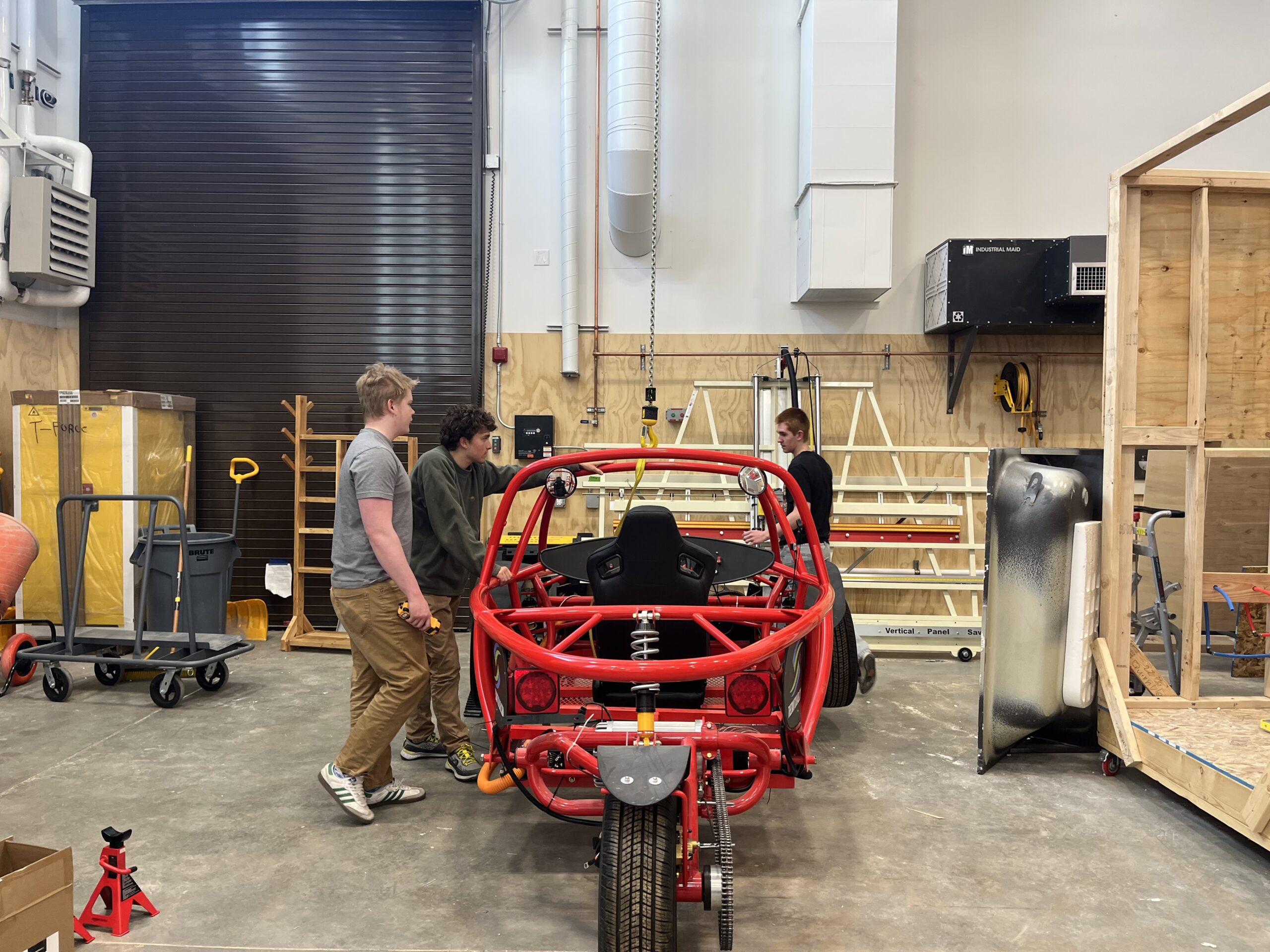
Superintendent Lyndsay Huntsman said the district is embracing a shift toward Personalized Competency Based Learning (PCBL), a model that lets students demonstrate mastery in a variety of ways.
“This type of personalized experience fosters a culture of continuous improvement and experimentation,” Huntsman said, “to drive innovation and push the boundaries of electric vehicle technology.”
She added that the electric vehicle project came with a price tag of just over $75,000—including the car, curriculum, support materials, and instructor training—but was entirely funded through two grants the district secured.
Gannon hopes to roll the three-seat car out of the shop before the last school bell. “If everything lights up green, they’ll drive it under their own power,” he said. “That’s the moment you can’t teach from a textbook.”

















